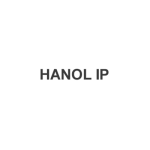When inventions/designs are disclosed to the public by one of the inventors/designers or applicants, a one year grace period is available in Korea for patent, utility model, and design applications.
Grace period is not based on the effective filing date
The duration of such grace period is one year before the Korean filing date (for patent applications filed before March 15 2012, governed by the old law, six months before the Korean filing date), not the effective filing date. To enjoy the grace period, therefore, either (i) a direct Korean application or (ii) an international application (followed by later national phase entry into Korea) must be filed within one year of the prior disclosure date, regardless of whether the application claims foreign priority. That is, the grace period is not extended further, even for cases claiming priority to a foreign application. If a foreign application is filed within the grace period and a direct Korean application or international application claiming priority to the foreign application is filed after the grace period, the Korean application cannot benefit from the grace period, and thus the prior disclosure would serve as prior art.
In what circumstances does the grace period apply?
Conditions for the grace period should be contemplated when an invention/design is disclosed before filing an application. Disclosures such as a public use, a presentation at an academic conference, or a printed publication are eligible for the grace period. However, inventions/designs which have been disclosed via a laid-open publication or a registration publication in or outside Korea before filing are not eligible for the grace period in Korea.

Regarding the disclosure of the invention, the Supreme Court ruled that "an invention publicly known or worked" means an invention disclosed under the condition that any person who does not have confidentiality obligations can readily grasp the content of the invention, regardless of whether the person actually recognises the invention (see, e.g. Supreme Court decision 2011Hu4011 decided on April 26 2012). This ruling is based on the reasoning that a person having ordinary skill in the art may be able to disassemble and analyse a product covered by the invention to understand the invention.
For an invention directed to a chemical substance or medicine, the Patent Court recently held that even if a product was publicly sold before the filing date, if a person skilled in the art was unable to determine its compositional ratio or components by using an analysis method available before the filing date, without undue effort, it cannot be considered that any person could have recognised the invention embodied in the product (Patent Court Decision 2016Heo7954 rendered on January 11 2018, which was upheld by the Supreme Court). In view of the above decision, in circumstances where the patentable feature of a composition invention distinguishable from prior art lies in a specific compositional ratio or a unique combination of components, and a product covering the composition invention was publicly sold before filing, it is advisable to file a patent application in Korea even if the one year grace period has already passed.
Submission of written statement and evidentiary document is required
The benefit of the grace period is not automatically granted in Korea. The applicant is required to indicate his/her intention to take advantage of the grace period in writing, with the submission of an evidentiary document showing (i) the disclosure date; (ii) the disclosing party; (iii) the type of disclosure; and (iv) the content of the disclosure.
In the case of patents and utility models, for applications filed before July 29 2015, a written statement of intention to take advantage of the grace period should be submitted at the time of filing, while an evidentiary document should be filed within 30 days of the filing date. However, the time period in which the grace period can be applied has been extended for applications filed on or after July 29 2015, as follows:
a. Submission of an amendment is possible
i. at any time prior to the issuance of a first office action (a Notice of Preliminary Rejection or a Notice of Allowance),
ii. within the time period for responding to a preliminary rejection, or
iii. when filing a request for re-examination, or
b. within three months of receipt of a Notice of Allowance, but before registration.
It should be kept in mind that the grace period cannot be acknowledged after registration of patents or utility models. If a written intention or an evidentiary document is not submitted within the above period, a third party may use the prior disclosure as a basis to deny the novelty of the claimed invention through a request for cancellation or an invalidation trial after the registration.
In the case of designs, however, the grace period can be claimed even after registration. A design applicant can claim the grace period and submit an evidentiary document at the following times:
a. at the time of filing a Korean application (an evidentiary document can be separately submitted within 30 days of the filing date);
b. until KIPO issues a Notice of Final Rejection or a Notice of Allowance (an evidentiary document can be separately submitted within 30 days of the date of claiming the grace period if a Notice of Final Rejection or a Notice of Allowance has not yet been issued);
c. at the time of submitting a response to an opposition filed by a third party; or
d. at the time of submitting a response to an invalidation trial lodged by a third party.
Remarks
When the grace period is properly claimed, an earlier disclosure made by one of the inventors/designers or applicants would not serve as prior art against the application at issue. However, if a third party discloses the invention/design before the filing date, such intervening disclosure serves as prior art. Thus, once a public disclosure is made, it is desirable to file an application as soon as possible.
(Comparison of Korean practice with US practice regarding grace period)
Min Son
Partner, Hanol IP & Law
HANOL Intellectual Property & Law
6th Floor, Daemyung Tower, 135, Beobwon-ro, Songpa-gu
Seoul, 05836
Republic of Korea
Tel: +82 2 942 1100
Fax: +82 2 942 2600











